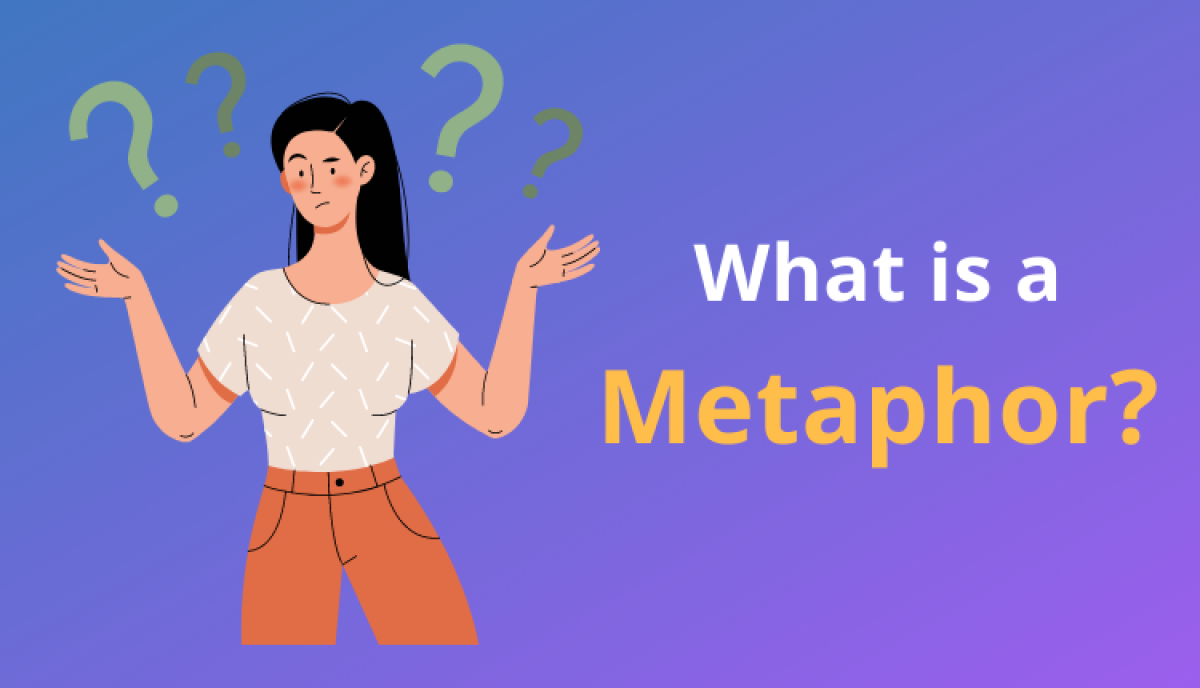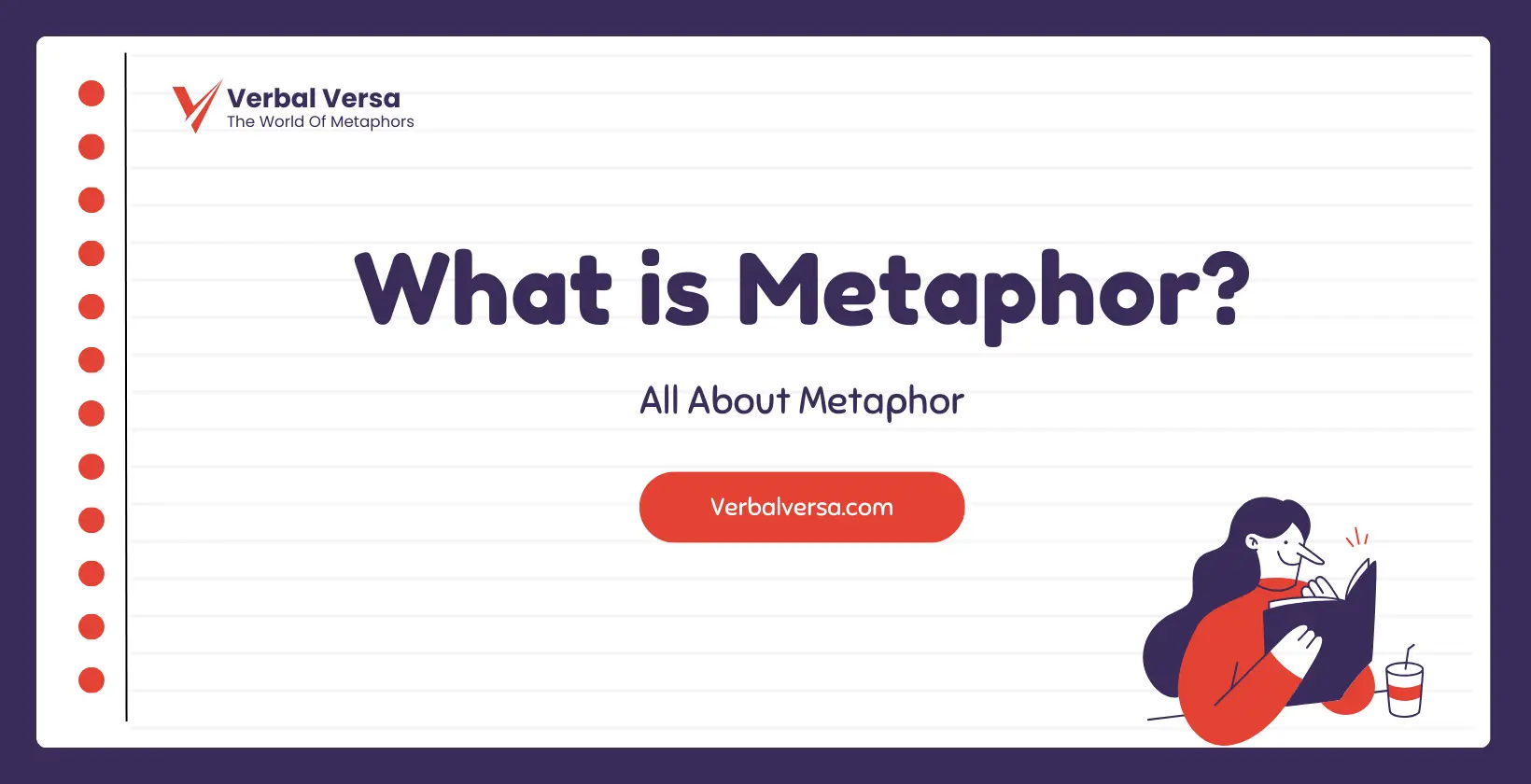In both literature and everyday language, metaphors play a powerful role in helping us understand and experience the world in vivid, imaginative ways. A metaphor is a figure of speech that directly compares two unrelated things, suggesting that one thing is another to highlight a shared quality or idea. This comparison enhances imagery and meaning, creating deeper emotional resonance and clearer mental pictures.
Writers, poets, and speakers use metaphors to communicate abstract ideas in a more tangible and relatable way. Whether you’re crafting a story, delivering a speech, or writing a poem, mastering the use of metaphor can elevate your language and captivate your audience.
In this article, we’ll explore what metaphors are, how they differ from other literary devices, their purposes in communication, and how to use them effectively in your writing.
What Is a Metaphor?

A metaphor is a rhetorical device that equates two seemingly unrelated subjects to draw a comparison and add symbolic meaning. Unlike similes, which use words like “as” or “like” to make comparisons, metaphors state that one thing is another.
Metaphor Example:
- “Time is a thief.”
- This metaphor suggests that time takes things from us—such as moments, memories, or youth—just like a thief would.
Simile vs. Metaphor:
- Simile: “Time is like a thief.”
- Metaphor: “Time is a thief.”
Metaphors are more direct than similes, creating stronger imagery and often more emotional impact.
Types of Metaphors
Metaphors come in various forms, each with its own stylistic purpose and effect:
1. Implied Metaphor
Instead of stating the comparison outright, an implied metaphor hints at it subtly.
- “He barked orders at his team.”
(Implying he’s like a dog without directly saying it.)
2. Extended Metaphor
This type of metaphor is developed over several lines or throughout an entire work, deepening the comparison and enriching the theme knowledge.
- In Shakespeare’s “All the world’s a stage,” the entire monologue continues this metaphor, comparing life to a theatrical play.
3. Mixed Metaphor
A mixed metaphor combines two incompatible metaphors, often creating a confusing or humorous effect.
- “We’ll burn that bridge when we come to it.”
(Mixing “burning bridges” with “crossing bridges.”)
4. Dead Metaphor
These are metaphors that have become so common that we no longer notice them as figurative language.
- “The foot of the bed” or “time is running out.”
Why Use Metaphors in Writing?
Metaphors are more than just decorative language—they serve important functions in communication and storytelling:
1. Enhance Imagery
Metaphors help readers visualize complex ideas or emotions by comparing them to familiar experiences.
- “Her voice was music to his ears.”
Creates a vivid, sensory experience.
2. Express Emotion
They allow writers to convey feelings that may be difficult to describe literally.
- “Grief is a heavy coat I can’t take off.”
This metaphor captures the ongoing, burdensome nature of sorrow.
3. Clarify Abstract Concepts
Metaphors make abstract or difficult concepts easier to understand.
- “A classroom is a garden, and students are the seeds.”
Simplifies the idea of education and growth.
4. Add Depth and Symbolism
Metaphors can add layers of meaning to a story, enhancing its theme and resonance.
How to Use Metaphors Effectively
Using metaphors skillfully requires a balance of creativity, clarity, and relevance. Here are tips for crafting strong metaphors:
1. Be Original
Avoid clichés like “a heart of gold” or “cold as ice.” Create fresh comparisons that surprise and engage your reader.
2. Keep It Relevant
Your metaphor should match the tone and theme of your writing. A metaphor about war may not suit a romantic poem—and vice versa.
3. Use Familiar Imagery
For clarity, relate abstract ideas to things your audience can easily visualize or relate to.
4. Don’t Overdo It
Too many metaphors can overwhelm your reader or muddle your message. Use them purposefully to support your main ideas.
Famous Metaphors in Literature
Here are a few iconic metaphors from literature that showcase their power and versatility:
-
“All the world’s a stage, and all the men and women merely players.”
— William Shakespeare, As You Like It
(Life is compared to a theatrical performance.) -
“Hope is the thing with feathers.”
— Emily Dickinson
(Hope is likened to a bird that sings and persists.) -
“I am the good shepherd.”
— The Bible, John 10:11
(Jesus uses metaphor to describe care and protection.)
Exercises to Practice Writing Metaphors
-
Pick an emotion (love, fear, anger). Compare it to a natural element (fire, storm, ocean).
Example: “Anger is a volcano waiting to erupt.”
-
Describe a feeling using a place or object.
Example: “Loneliness is an empty room with no windows.”
-
Extend a metaphor across a paragraph.
Choose a central comparison and build a small scene or description around it.
Conclusion
Metaphors are a powerful tool for enhancing imagery through comparison, allowing writers and speakers to communicate meaning in creative and memorable ways. By equating two different things, metaphors bring abstract concepts to life and create a more vivid, emotional connection with the audience.
Whether you’re crafting a poem, writing a story, or simply trying to express yourself more effectively, mastering the metaphor will enrich your language and leave a lasting impression. So next time you write, ask yourself: What is this like?—and let your imagination draw the connection.
Discover heartwarming stories, amazing recipes, and lifestyle tips at Blessed Beyond Words – your go-to source for food and general insights!







